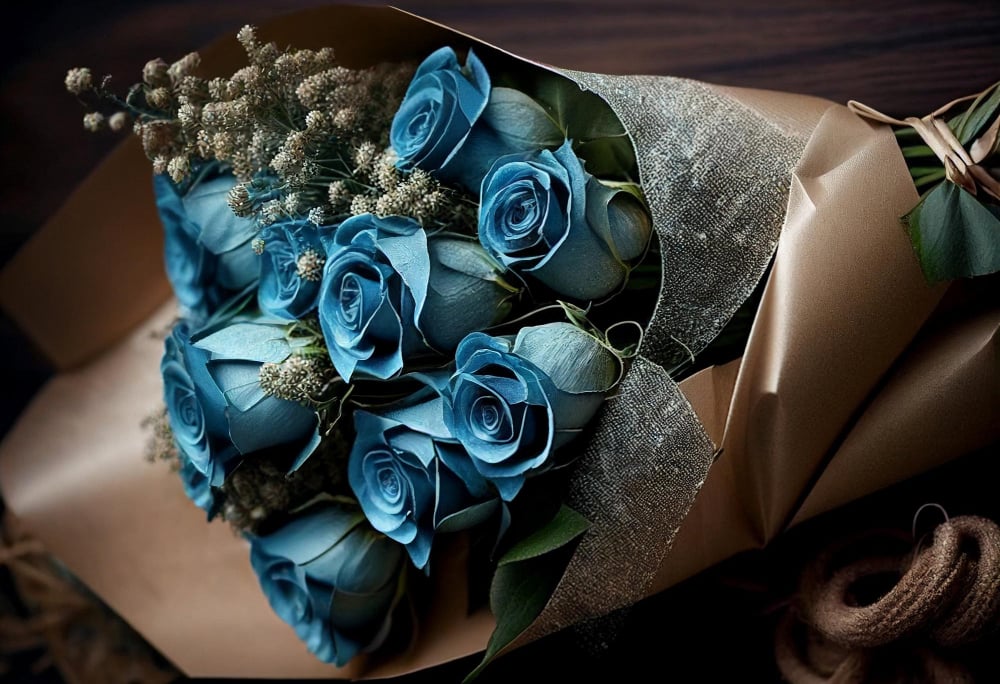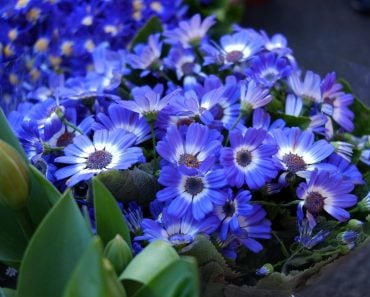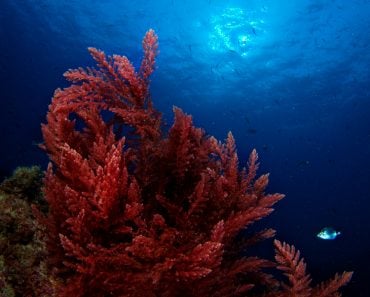Table of Contents (click to expand)
There are no blue roses in nature, because roses lack the blue pigment. Scientists, however, using biotechnology, created the “Applause” variety of rose that does contain the blue pigment.
“Roses red and roses white
Plucked I for my love’s delight.
She would none of all my posies,
Bade me gather her blue roses.
Half the world I wandered through,
Seeking where such flowers grew.
Half the world unto my quest
Answered me with laugh and jest.”
Rudyard Kipling wrote those lines about blue roses in the 19th century, a time when blue roses were truly impossible to find. However, almost 100 years later, the quest for blue roses is far more promising.
Most blue roses found at florists’ shops are actually white roses dyed with a blue coloring. Then there are the purplish shades of roses, such as Bleu Magenta and Rosa Rhapsody. However, naturally bred true blue roses continue to be elusive. True blue roses do not exist in nature.
However, we might finally have access to blue roses thanks to biotechnology. So far, researchers in Japan and Australia have developed a genetically modified ‘blue’ rose called ‘Applause’, which actually looks more like a mauve rose. It is the closest we have to a real blue rose, but researchers are still working on developing a blue-er version of this rose.

Recommended Video for you:
Breeders Have Been Trying For Centuries
Blue roses have been a highly sought after target for rose breeders. Back in 1840, the horticultural societies of Britain and Belgium announced a prize of 500,000 francs for the person who could develop a blue rose.
Even so, years of efforts by rose breeders could not produce a blue rose, because the flower lacked a key enzyme needed to produce the blue pigment delphinidin.
How Do Roses Get Their Color?
Roses, like other flowers, get their color from pigment molecules called anthocyanins. There are three main anthocyanin pigments in plants: cyanidin, pelargonidin and delphinidin. Cyanidin leads to deep red, pink and lilac or mauve. Pelargonin is responsible for orange and red colors. Delphinidin is what leads to blue and purple colors. The rose flower lacks delphinidin, so there are no blue roses in nature.
A few rose varieties, such as the ‘Rhapsody in Blue’ have been reported to contain small amounts of the blue pigment rosacyanin, but that still does not give the flowers a true blue color.
In addition, the pH of the plant cell vacuole is important for pigment expression. Vacuoles are storage spaces in the cells within which pigment molecules are present. The colors are redder when the pH is acidic, and bluer when the pH is neutral or weakly acidic. Rose vacuoles have a pH between 3.69 to 5.78.
Pigments can also combine with other pigments or with metal ions to generate a blue color.
Common floricultural crops, such as roses, chrysanthemums and carnations, do not contain delphinidin-based anthocyanins. You may be thinking, “But I saw those blue chrysanthemums at the florists.” Well, they were actually white chrysanthemums dyed with a blue coloring. Similarly, blue carnations are either dyed or genetically modified.

Birth Of A Blue Rose
Back in 2005, researchers at Florigene (Australia) and Suntory (Japan) developed a prototype of a blue rose using a genetic engineering technology developed by CSIRO (Australia). It took 20 years of research and an investment of 3 billion Yen to achieve this blue rose. They introduced a blue pigment gene (delphinidin) from pansy, a gene for the enzyme dihydroflavonol reductase (DFR) from iris, and an RNAi sequence developed by CSIRO to turn off the DFR enzyme that existed within the rose.
When researchers introduced the delphinidin gene into a red rose containing cyanidin, it resulted in a dark burgundy rose.
Next, they used the RNAi gene silencing technology to turn off the enzyme DFR in the red rose. The enzyme DFR is what converts the precursor pigments to their respective color. By turning off the gene, there would be no interference from the cyanidin pigment. With the cyanidin pathway turned off, they introduced a delphinidin gene from pansy (for the blue color) and a modified DFR gene from iris to turn the delphinidin precursor to the blue color pigment. The resulting rose had high levels of delphinidin. However, the gene silencing did not fully work, so some cyanidin was produced, resulting in a mauve color. This mauve-colored rose was commercialized as the ‘Applause’ variety and has been available commercially in Japan since 2009, as well as in the US and Canada since 2011.
The researchers hypothesized that if they could make the rose petals less acidic (roses have pH 3.69 to 5.78) and/or use a more perfect gene-silencing method, they would be able to create a true blue rose.

Conclusion
The quest for true blue roses continues, although scientists have made significant progress in this pursuit. Following the creation of the genetically engineered mauve rose variety ‘Applause’, researchers were able to gain a better understanding of how they may be able to develop a sky-blue or true blue-colored rose. Until then, humanity will continue to wait for its first glimpse of a truly blue rose!
References (click to expand)
- Katsumoto, Y., Fukuchi-Mizutani, M., Fukui, Y., Brugliera, F., Holton, T. A., Karan, M., … Tanaka, Y. (2007, September 28). Engineering of the Rose Flavonoid Biosynthetic Pathway Successfully Generated Blue-Hued Flowers Accumulating Delphinidin. Plant and Cell Physiology. Oxford University Press (OUP).
- Plant gene replacement results in the world's only blue rose.
- Florigene Flowers.
- World's First 'Blue' Rose Soon Available in U.S..













